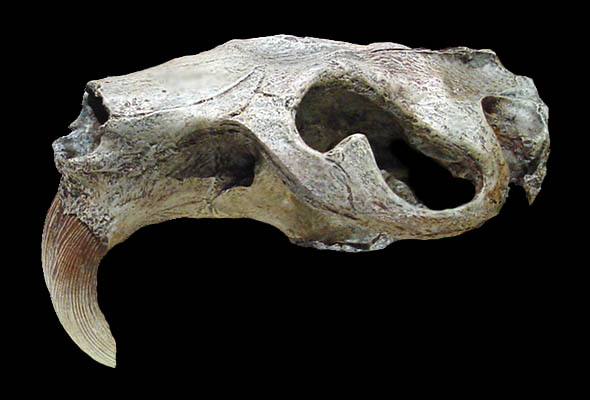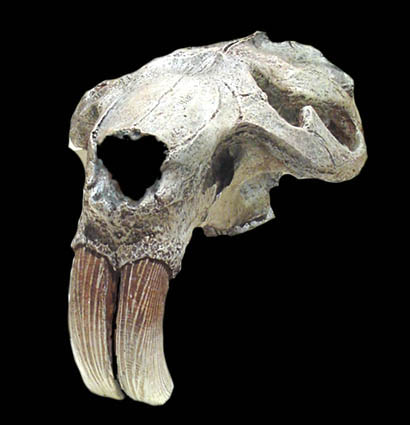Product Description
With EXCEPTIONAL preservation and detail, this UPPER fossil tusk incisor comes from the prehistoric GIANT BEAVER, Castoroides. Premium examples of a Castoroides fossil tusk are coveted by all that collect Pleistocene North American fossils. The main incisors are the most requested fossil of this fascinating extinct giant animal. FINE QUALITY fossil remains of giant beaver are very difficult to ever find on the market.
Every detail is perfectly preserved with an extraordinary, naturally lustrous enamel! The intact natural feeding wear is evident on the tip, from rubbing against the opposing tusk when this beast was once alive.
SEE MORE GIANT BEAVER FOSSILS
HISTORY
Castoroides leiseyorum, or Giant Beaver, is an extinct species of enormous beavers that lived in North America during the Pleistocene. C. leiseyorum was the largest beaver to ever exist. Prehistoric giant beavers were much larger than modern beavers. Their average length was approximately 1.9 m (6.2 ft), and they could grow as large as 2.2 m (7.2 ft). The weight of the giant beaver could vary from 90 kg (198 lb) to 125 kg (276 lb). This makes it the largest known rodent in North America during the Pleistocene and the largest known beaver.
Prehistoric giant beavers were much larger than modern beavers. Their average length was approximately 1.9 m (6.2 ft), and they could grow as large as 2.2 m (7.2 ft). The weight of the giant beaver could vary from 90 kg (198 lb) to 125 kg (276 lb). This makes it the largest known rodent in North America during the Pleistocene and the largest known beaver to have ever lived.
One of the defining characteristics of the giant beaver was their incisors, which differ in size and shape from those of modern beavers. Modern beavers have incisor teeth with smooth enamel, while the teeth of the giant beaver were much larger up to 15 cm (6 in) long, with a striated, textured enamel surface.


IMAGES PROTECTED BY COPYRIGHT
 US DOLLAR
US DOLLAR
 EURO
EURO
 AUSTRALIAN DOLLAR
AUSTRALIAN DOLLAR
 CANADIAN DOLLAR
CANADIAN DOLLAR
 POUND STERLING
POUND STERLING
















